– Welcome back everybody. Happy Monday to you. This is Entrepreneurialism in Society. It’s a course that’s offered through the University of Wisconsin School of Human Ecology. As we begin today, I would like to thank our partners in supporting this course. They include the UW Office of Corporate Affairs, the UW College of Engineering for their technical support, and financial support is provided from the Marion Ewing Kauffman Foundation which is committed to advancing academic education in entrepreneurialism. We also want to thank our media partners today, that is Wisconsin Public Television. And their crew provides an opportunity to air these lectures on the University Place. I’m very pleased to introduce our guest today. He is Roger Bird.
He’s president of Trek Corporation’s Dream Bikes division. Roger moved to Wisconsin from Baltimore about seven years ago. He’s been with Trek for 11 years and in addition to leading the Dream Bikes vision, he also holds the titles of Director of Trek Retail Services and Director of Concept Store Design. Dream Bikes is a 501(c)(3) nonprofit bicycle salvage and resell store that partners with the Boys and Girls Club job ready program to ensure that kids have a safe and productive work environment to develop useful skills that they can apply in the marketplace. It’s a terrific example of how corporate interests can seed and advance social entrepreneurial concepts. With 27 years of experience in the cycling industry, it is perhaps no surprise that Roger is an avid mountain and road cyclist, including motocross. He’s here to tell us about the journey that Dream Bikes has had since it was established a short time ago and then he’s going to look forward to talking with all of you. Please join me in welcoming Roger Bird.
(APPLAUSE)
– Thank you. Thanks for having me here today. There was a great guy who did great things. He didn’t brag and he never let anyone send out a press release about the millions and millions of dollars that he gave away. His millions of dollars was used for great things. The money was used for kids. And for kids’ education. And used for safe places for those who didn’t have many places left to go. Dick Burke founded Trek Bicycles back in 1976. And for years he gave away millions of dollars.
Some of his money went to the Boys and Girls Club of Dane County and some to high school students in Milwaukee who believed in volunteering but who couldn’t afford to go to college on their own. Dick was also a huge supporter to the Milwaukee Youth Arts Center. He made a difference in many ways but they were all quiet ways. Dick passed away in March this year and he is dearly missed around the bicycle company and by thousands of bicycle dealers all over the world. Dick was a relationship guy. Make no mistake about his no-bull approach to business. But he knew that great relationships with customers yielded great business. Dick’s son John Burke took over as president of Trek about eight years ago. And John brings his own style of hard work, success and compassion to work with him every day. John constantly challenges all of us at Trek to make a difference, leave a mark and change the world.
John serves on the President’s Council on Physical Fitness. He volunteers at Big Brothers and Big Sisters. And he’s doing an awesome job at filling his dad’s shoes by doing great things and changing the world. A couple of years ago Trek started an effort called One World, Two Wheels. Just look at the pressing issues facing us today. Global warming, escalating obesity, and increasing congestion. There is one common answer. The bicycle is a cure to much of what ails us. It is an elegant yet simple solution to many complex problems. A simple solution to some of the world’s most complex problems.
That is One World, Two Wheels. From time to time, John brings up one of the great lessons that his mom taught him which goes: to whom much is given, much is required. John admits that he has been given much. But he says nothing is more valuable than his opportunity to change the world. I’m the guy at Trek who helps the bicycle dealers become more successful in their business. We have a comprehensive business solution called the Trek Dealer Continuous Improvement Program. My focus is to help all our customers be wildly successful. I also evaluate markets all over the world where Trek is under-represented and I help our competent and committed dealers become more successful there. In cases where we don’t have a good dealer, we might open a new store. We work with a new business owner to design and build a bigger and better bicycle store from the inside out called a concept store.
My focus is to put the right people in business in the right place. The right people don’t always have the money necessary to do the job so we help put them in business, sometimes with very little or no money up front. John Burke and I meet one on one every week and discuss my current business issues. About two years ago we were talking about changing the world, helping kids and bringing bicycles to communities in need. It kind of turned into this cool idea of opening a used bike store on Allied Drive in Madison. We would hire the kids from the Boys and Girls Club and teach them to fix the bikes and run the business. We would also provide micro financing to people in the community who needed a bike but couldn’t afford one. We decided on the name Dream Bikes. In March 2008 Dream Bikes on Allied Drive opened for business. John Burke and his family provided the seed money to start this 501(3) nonprofit business.
Governor Doyle was there to help us cut the ribbon. And your own Jerry O’Brien was there to support the effort. The kids sell the bikes. They fix the bikes. They manage inventory and help with the marketing activities. Our youngest employee is 14 and are oldest is 19. The kids make almost $8 per hour but it’s up to them to keep their jobs. It’s not charity, it’s a business and an opportunity for the kids to help do something great. Not just work at a fast food burger place. John Burke always thinks before he speaks.
He speaks regularly about change and not waiting around to make decisions. I regularly ask those who work for me to act and do what they think is in the best interests of our business. It’s hard to think like the business owner when it’s just a job. But this entrepreneurial spirit can exist inside all of us. Only through many attempts and misses can good ideas and positive change occur. Mistakes are just shy of a great idea. I don’t think any of us can fail at anything as long as we do our best. If we do our best, the results can never be called a failure. Great opportunities are everywhere. I tell the kids at Dream Bikes that they can be the manager of a new Dream Bikes store or go on to work at one of the many bicycle stores around Madison.
They can help us open more and more of what I see as another 50 Dream Bikes stores in the United States. They can go on to college and learn the retail business. And if they turned out to be the right kind of person, I might even help them open their own Trek concept store. The kids could own their own business, continue to work in nonprofits, change the world or do something great, all they need to do is to decide. There’s a great story about when on Wednesday evenings after Abraham Lincoln became president, he liked to go to church and listen to Dr. Phineas Gurly give his sermon at the Presbyterian Church on New York Avenue in Washington. Mr. Lincoln would slip out of the White House and walk down to the church along with his presidential aide. And so that he could come and go unnoticed, Dr. Gurly would leave the study door cracked open, and the president would come in through the back of the building, sit down and listen to the sermon without being seen.
One time as they walked back to the White House, the president’s aide asked him what he thought of the sermon. Mr. Lincoln replied that he thought the content was excellent, that Dr. Gurly delivered the message very well and that he put a lot of work into preparing for it. The aide said, then you would say it was an excellent sermon. But the president said, no. The aide then repeated how the president described the sermon to which the president said, that may be true, but Dr. Gurly forgot the most important thing. He forgot to ask us to do something great. All of you could go on to open your own business.
Or work in nonprofits. Or change the world. All you need to do is decide. Follow your dreams. Leave your mark. Make a difference. And decide to do something great. Thank you.
– Thank you, Roger.
(APPLAUSE)
Thanks very much for your comments. They’re inspiring and this is certainly going to give us an opportunity to learn more about Dream Bikes and have the students ask questions about that as well as about Trek Bicycle Corporation which you obviously have a great deal of experience with. And you mentioned you’d be happy to answer questions regarding that. I’m going to go ahead and start while you’re all thinking of your questions. If you would tell us just a little bit more about the origin of Dream Bikes. Just how did it get started? You mentioned it’s a 501(c)(3) nonprofit. I won’t have the exact terminology here, but it’s essentially a salvage circumstance. Where do get the bikes? And what exactly do the kids that are working on it do with them?
– It’s a bicycle store. It’s a full bicycle store. We sell bikes. We sell accessories. We do service work. We have a shop with tools and mechanics and parts. But all the bikes there are used bikes. Every single one of them was donated by someone in the community. Then the kids fixed them up and put them out on the floor for sale. This year, since we opened in March, we’ve had 1100 bikes donated to us strictly by word of mouth.
So there’s been no public marketing campaign or no big bike drive effort. So it’s a pretty cool model. Where it started was John and I were literally in his office just talking about things. And John had been, you know, spending time over at the Boys and Girls Club on Allied Drive. His family was really key in getting the new building built. And they have a food pantry there. And there’s this guy Mike Bowden who runs the food pantry, a great guy. And him and John were talking one day and they were talking about how great it would be to have a program that gave the kids a job and kind of did something good for the community. Because Allied Drive is a really troubled place. You know, if you look at Madison which overall is a pretty safe city and safe community, there’s a lot, by far the majority of the police calls and a lot of troubled spots come out of Allied Drive.
So we’re really looking at is a great opportunity, and we decided that we would try to do something as far as this bike store with kids. But we really didn’t know what shape it would take. We came up with the non-profit thing kind of after the fact. The store wasn’t actually officially nonprofit until after we had already been open for business. So it was really something that we just kind of built as we went but we knew we wanted to do something so I went out and was looking for real estate and signed a lease and in a short amount time the store opened. And right now it’s got its full status with the state and the government. And we’re looking at signing a lease in Milwaukee probably this week to open a second store. Sometime in the spring.
– So as a nonprofit organization that really was spawned from a for-profit venture, being Trek Bicycle Corporation, does Dream Bikes have, do you have specific goals for Dream Bikes that the organization is held accountable to? You know, when we work with other nonprofits here on campus we’re always talking about how we evaluate whether or not they’re actually achieving their goals and whether or not they’re successful.
And we actually start to look toward measurable results that will tell them whether or not they’re meeting their objectives. Do any of those apply to what’s going on at Dream Bikes?
– You know, they really do. And I know a lot of you guys are retail, you’re in the retail program. But business-wise, what we tried to do is we tried to form a budget and a business model that could be duplicated later. So we built this budget not really knowing what the store would be capable of and we set the budget for the first full year of sales at $50,000 gross revenue. Not really knowing how it would be accepted in the community and how much stuff we would sell. So, you know, we really started off thinking that we would lose about $50,000 in the first year. And we were planned to do that. We had the money set up in an account and that was pretty much the program.
But the store started just exceeding the sales goals every day and every week. And we’re going to finish the year with only 10 months of sales, probably about $125,000. So it’s really close to breaking even. It will lose a little bit of money this year. Mostly due to the fact there we’re already training the second manager for the Milwaukee store. So he’s been there for a couple of months and that expense, you know, that operating expense is on the books of the Madison store. But, you know, the goals there are to bring bikes into the community, number one. To give the kids a job, number two. Our initial round of hires was nine kids. We hired nine kids from the Boys and Girls Club and some of them have left or gone back to school or moved out of the area.
We had a new group of kids that came and joined us for the summertime. And then as school has started up again, we have a few more that have adjusted their schedule to figure out what they can do. So bring bikes to the community, giving kids a job. But we just don’t want to give them a job, we want them to learn something. And I have this attitude where it’s up and out. You’ve got two years to learn your stuff then you need to move on. And get a job somewhere else. And we want to help them. It’s not this end date that you get terminated. But we want the kids to really learn something and achieve something and whether they go to work at one the Trek bicycle stores in Madison or go on somewhere else, that I think is a true measure of the success of the business.
Because a lot of these kids, this is their first job they’ve ever had. And quite frankly they would have never had a job. Maybe work at McDonald’s. Maybe work at Walgreens. But this is a real opportunity for them. They helped write the mission statement. They helped write our values program that everyone is evaluated on every year. They helped do all the marketing activities and the grand opening plan. They watch the sales numbers. They fix the bikes.
They manage inventory. They’re great on the computers. And it’s a great thing for the kids. And then really the third thing that we’re trying to do was to get bicycles, not just into the community but into the hands of people who really needed them. And there’s a lot of people in that community that they don’t own a car. In some cases they can’t even afford a bus pass to get to work. So they’re relying on rides from friends or family members or they’re walking. And get on a bike, and you guys know, you get on a bike and you improve your range of travel like 10 times. So this was a great opportunity to see if we could offer this micro-financing program to some people in the neighborhood who really needed a bike. Who really needed a bike.
Like they would lose their job if they didn’t get to work on time. Or they miss so much time at school that maybe there would have been a problem with them continuing if they couldn’t get there regularly. So the bicycle really did that for them and right now I think we have about 20 micro-finance contracts out there. It’s a simple little thing. It’s a one-page. They fill it out. We give them the bikes and say, see you later. And they pay us what they can. Whether it’s $10 a week or $10 a month, or whatever works for them. But again it’s low-cost, the bikes were donated.
We’re only spending about $10 fixing the bike up for resale. So we can afford to do that kind of thing. So those are the three things that we’re trying to achieve with Dream Bikes. You know, bring bikes to the community, get the kids jobs and work experience, and then bring bicycles to adults who really needed it for transportation but couldn’t afford it. And then again, you know, it’s a business. You know, it’s not charity. I think the coolest thing about Dream Bikes is that we figured out that this is a business model. The store can sustain itself. Next year, in ’09, Dream Bikes in Madison will be profitable. It will actually make, it will break even.
And if we can continue to roll them out around the country where they break even and can sustain themselves, I’d say that’s a pretty good nonprofit model.
– It’s not an unusual story. Where a project that has perhaps a vision ends up really resulting in a variety of spillover benefits. And you’ve already, you’ve identified that you had several things that you wanted to accomplish. Some significant training and education of the kids, 14 to 19, that were going to be involved in it. Then the confidence building that would come of that. And the huge issue in terms of being able to provide transportation to the people in that community. Recognizing certainly that neighborhoods that are impacted by poverty are very often stuck in that cycle of poverty for the lack of their ability to move on. So it’s certainly something that’s remarkably commendable. Remind me, did you say that it’s been up and running now for just 10 months?
– Yeah, well it opened in March, the beginning of March. So by the end of the year there will be 10 full months of business.
– And one of your more recent statements is that you think that store will be more profitable next year. Which is way ahead of the life cycle of most small businesses which very often don’t see any kind of significant profit until about their fifth year. So again terrific. Let’s talk a little bit– Jerry do you have a question?
– I’m not sure if you know this and not, my name’s Jerry by the way, do you see any improvement in the kids’ grades that are working for you? Do you see them excelling more in class, going to school more, really improving kind of their situation at home versus when they get out of the neighborhood and whatnot?
– You know, that’s a great question. I don’t know if I can really answer that in a numbers kind of way.
I don’t see their grades. We don’t ask them for their grades. But to watch this kid who never had a job before and they’re there for a couple of months and they’re learning to interact with customers and they have this computer that they can work on all day long and they can manage inventory and they can be responsible for a certain part of the business, it’s done amazing things to some of these kids and just kind of breaking out of their shell. And you can tell that they’ve woken up a little bit. And they realize that there’s not only this business world out there but there’s this nonprofit situation that quite frankly they were never exposed to. So their attitude changes, their motivation changes, their communication skills improve. You know, I have a thing where during the day when they’re supposed to be in school, no way. If they’re not in school, they’re not allowed to come to the store. And we haven’t had an issue. But that was one of the things we decided early on.
That if one of the kids ended up sick or cutting school or whatever, they’re not going to be able to come and hang out at the bike store. There’s no way. The manager would be on the phone to the kids’ parents and help keep them on the right track. But it’s a great question. I think we could probably do a little bit more of that. But we like to, at some point there’s this great business relationship that we have with the kids and it’s just really, it’s encouraging to see them really change. Thank you.
– Hi, my question revolves around marketing. You said that the majority of your marketing has been word-of-mouth over the past several months. I’m wondering what you have planned for the next few months or over the next year in terms of marketing and advertising for Dream Bikes?
– Well, we actually realized that there was a huge challenge with getting the business open and figuring out what our capacity was and what type of response we would get from the community with actually bikes coming in the front door. And we’ve been contacted by a marketing company and an ad agency in Madison and we’re working with them to come up with a more formal marketing plan. We’re going to have flyers. We’re going to do some events here at the UW. We’re going to get posters placed on the back of some buses around town. And also going to really package our corporate sponsorship program trying to get donations and funds to Dream Bikes. To help it expand. So it’s something that we realize we need to do more in the community. Quite frankly though right now we have more bikes than we can handle. And we’re using outside storage and donated space to hold some of these bikes.
So over the winter we’ll catch up a little bit. And we’ll be able to improve our process with checking in bikes quickly and getting them fixed for resale. So we will have a marketing plan that is probably going to start up here this month. And then go through, you’ll see some stuff on campus probably around holidays. Good question though. Thanks.
– After you get the bikes, typically what’s the markup on them? What’s kind of price point that you try to sell them at? And my second question is what’s the turn over been like since all the incoming inventory just in these past few months that you’ve been open? Have you seen huge sales?
– Well, to answer your first question, obviously the mark up is rather large. Because the bikes come in at no cost and, like I said, the average investment that we make to fix the bikes up is usually around $20 but what we try to do is we try to say okay, there’s department store bikes and then there is bike shop brand bikes. So on one hand you have a bike that might have been purchased at Target or Wal-Mart or one of the department stores and then on the other hand you have a Trek or something like that that’s only sold through the specialty channel. So we look at the bike and we look at the condition, but we pretty much have set pricing structure depending on what the bike originally sold for. And it’s a good deal less than that. Most people that come in really find that it’s a great value. And we do another thing where if you live in the community and you’re part of the community organizations in Allied Drive, you can get both bikes, parts and service at 50% off the marked retail. So again really trying to help the community. And get the kids on bikes for Christmas that normally wouldn’t have any other physical activity once they got home. Or maybe they’re playing a Gameboy or something like that.
We really want to get them on bikes. So we’ve seen mothers and families come in and buy four or five kids’ bikes at a time. And some of these kids have never owned a bike before. So the markup, you know, although you can look at the business side of things and say it’s a huge markup. But there is also a ton of operating costs and we try to keep these kids employed, you know, and by far our biggest expense is payroll. So it really balances each other out.
– I’m curious, Roger, are all the students, I keep calling and students. Are all the kids that are working with you, do all of them learn how to fix bikes as well as run the counter? As well as other aspects of the business? Or do you truly hire them for a piece of what needs to be done at the store?
– Not all of them are trained on full mechanics responsibilities in the service shop. It’s probably split half and half. So half of them will be on the sales floor helping customers, managing the inventory, running the computer, selling the products to customers. And then the other half will be repairing the bikes and managing the parts inventory in the back. There’s actually a fair number of bikes that we don’t even resell because they’re either damaged beyond repair or they’re just really not the kind of bike that we want to try to sell. So a lot of times what we’ll do is we’ll strip the non-metal parts off of them and we recycle all of that metal. Which is a big opportunity for us as well. But within the store we have job maps. We have specific roles and responsibilities, tasks, standards, measurements that we use to keep everybody not only focused on one they’re meant to do, but hopefully placed in the job and placed in the area where they want to be. And they have some passion for.
So a lot of kids will come in saying, I just want to work of the bike store and they don’t know where they fit. So we kind of work with them. Everyone is exposed to the bicycle, everyone’s trained on the different parts of the bicycle because they need to know. But then from there we really figure out who’s going to be in the back, being the wrench on the bikes and who’s going to be more on the sales floor.
– I think it’s a very interesting model and there’s a couple questions I want to get here quickly but it’s also interesting, and not in any way to discount the beneficence, the goodwill that Trek is involved in, in promoting this, but if you think about this, you are also preparing your workforce for the future. Because I know that you didn’t get into this with the expectation that you were necessarily training potential employees for the future, but the likelihood is good that a lot of the kids, students that are involved, they could eventually move on to work for Trek as a mechanic or on the retail floor, correct?
– Yeah, or own their own store. Like I said, we have this concept store program and it’s all about putting the right people in the right markets. And I think already you can tell a couple of these kids, they’re just on the right path. They’ve kind of found their niche.
– Ryan, your former intern has a question.
– Hey, Roger, could you expand a little more about how Dick Burke was able to install the generosity into the company. And was it just lead by example or what steps did he make sure the whole company took so everyone had the giving spirit? If you could just expand about that.
– You know, that’s a good question. And Dick was an amazing man. He was so intense and he was such a numbers guy but at the same time he had almost this other side of him that most people didn’t know. So when you talk about leading by example, it was kind of hard to follow him. Because at his memorial service just about every single person there learned something that they didn’t know about Dick Burke. And I think that he led by an example in a large way.
I think that he lead by example by giving these ideas and these great notions of change and making a difference to his kids. And John Burke, you know, does that every day. And Dick’s daughter, Mary Burke, does that every day. Mary worked for the governor’s office, now she’s the president of Boys and Girls Club in Dane County. And they’re just amazing people. So they lead by example to a degree. But it’s not public. You know, you really need to be behind the scenes to figure out everything they’ve done. And quite frankly, you know, Dick did thousands times more to communities in Wisconsin than I ever dreamed of. So it’s leading by example.
John’s great because he’s just a real straightforward guy. He just gets out there. He’s at the office every single day working his tail off. And he’s always telling people, change the world, leave a mark, what’s your legacy going to be. And he’s not messing around. He’s dead serious. And so, One World, Two Wheels. You know, there’s Bikes Belong, which is a huge lobbying effort on Capitol Hill with transportation funds. There’s all these things that he does that aren’t necessarily public, but they really make a big difference. I mean, there’s millions and millions of dollars in the United States available for bike paths and bike lanes and a lot of that kind of stuff would have never happened without some of the support and help that John and Dick and Mary have given over the years.
So it’s leading by example but it comes down to the daily thing you know, making the sausage. You’re just every day looking for opportunities to make a difference. So good question though.
– Hi, I have another question. So could you explain a little more of the hiring process that you go through to hire the kids. Do they more approach you or is it more an outreach effort to the community? And then is a like a series of interviews and filling out applications, or how does that all work?
– You know the nice thing is that the Boys and Girls Club has a program called Job Ready. And Job Ready is meant to help the kids prepare to go into the workforce. So it talks about filling out a rsum, they fill out a sample rsum.
Talks about going through the interview process. They have some mock interviews. They read a lot of reference material. They really study for the time when they’re going to have to apply for a job and hopefully land a job. So the Boys and Girls Club really prepares the kids for the next step. And what they do is they take these applicants that are possibly interested in working at the bike store and almost prescreen them. And then they’ll send us the stack of applications that they feel are really best suited to come work at Dream Bikes. And then we’ll have another interview with them and we’ll see how it goes. But like I said it’s not charity. And there have actually been a couple of kids that got the job but they couldn’t keep the job.
They couldn’t get to work on time; they couldn’t meet the standards of keeping the job. You know, Dick Burke always said that everyone deserves to have a job. But it’s up to them to keep it. And that’s one of the great lessons that we’ve learned at Dream Bikes and we use every day that it’s really up to them. So we just work it through the Boys and Girls Club and they have a great program.
– When you look back over the last 10 months, which isn’t a horribly long period of time but I bet there are some lessons learned, things you might have approached differently. What would you share with us?
– There’s definitely some lessons learned, there’s quite a few of them. I think what we could’ve done is we could have trained the kids earlier and trained them more. We have a standard at the concept stores and we have a standard at our Trek stores in Madison where we train and the staff for 40 hours before they actually sell anything.
And we did some of that but we didn’t really put the kids in the environment. The store was still being built and we were doing a lot of role plays and seminars and stuff like that. What we should have done is just ship them off to our Trek stores, you know, we have one in the east and one in the west, and just have them work there. We did some of that but we didn’t do enough. So I think the kids could have been more prepared when we first opened the store. But the nice thing is now that the store’s up and running a lot of the employees, a lot of the staff, a lot of the kids that work there now really help to train some of the new staff coming on. So it really helped speed the process. The other thing that I learned is our store on Allied Drive is way too small. You know, I signed a lease. I didn’t want to over-commit myself.
We signed a lease. It’s 2200 square feet. The rent is $20,000 a year. I thought that we would be able to afford that and if we were just busting at the seams then we would figure something else out. Well, right away on opening weekend on one Saturday we sold over 30 bikes. And we only had about 90 bikes in the store. So 30 percent of our inventory was gone in one day. And really since then, we haven’t been able to catch up. So having a store big enough, it’s having the processes in place, it’s training the staff and then really it’s managing the flow of bikes both in and out of the store a little bit better. So as we get closer to signing a lease in Milwaukee, which hopefully will be signed this week, that’s one of the lessons we learned.
Much bigger store. Work much farther ahead to get the bikes ready. And then train the staff in the environment, the actual environment where they’re going to be selling much sooner.
– We have a question up here from Abby.
– Hi, you said you’re going to go to Milwaukee so what are you going to do if you don’t necessarily get quite as many donations in Milwaukee? I know it’s not necessarily as big a bicycle city as Madison is. Are you just going to transfer some of the inventory or over time what is your plan?
– We could transfer inventory if we needed to. We could do bike drives in Madison for the benefit of the Milwaukee store if we needed to. But that’s an interesting question because if you look at it, I don’t know that much about Milwaukee.
I moved here not too long ago and I go between my work and my home and I come to State Street for pizza and that’s about it. So I don’t get to Milwaukee very much. And when I started going to Milwaukee and checking it out, it’s a huge city. There’s two Boys and Girls Clubs in Madison. There’s going to be like 39 Boys and Girls Clubs by the end of the year in Milwaukee. They have more than 30 already. There’s something like 500 kids in the Boys and Girls Club program in Madison between the two clubs. There’s over 30,000 kids that go through the Boys and Girls Club in Milwaukee. So you look at the amount of people, you look at the urban setting, you look at just the size of the city itself. I think it will do pretty good.
You know, there’s one of the keys to me with the success of Dream Bikes is we look for an opportunity and we look for a city where it would work and we think it would work and then we go look at the local bike dealer, the local Trek dealer and we go to them and say is this something you would support and you would help and kind of cross promote. That’s about it. We don’t really need anything from you, just a little support. And we went to the guy in Milwaukee, Chris Cagle, who owns Wheel and Sprocket, and I called Chris on the phone and I said, hey, this Dream Bikes thing and he goes oh, I know all about it. I said, what do you think about coming to Milwaukee. He said, how soon can you get here? And I went to meet with Chris in his office and he actually had the director of the Wisconsin Bike Federation there. He had City Council people ready to talk to me. He had already kind of mapped it out. And I said, Chris, can I rely on you to help me collect some bikes?
Chris said, Roger, I’ll give you all the bikes you can handle. And at that point, I figured I was set. And we’ll just go forward. So it’s a really good question but I have a strong suspicion that not only will we be fine in Milwaukee but we’ll probably have to open at least two locations because it’s going to be big.
– I’m going to hand the mic off to another student here in just a second but I want to ask a question that has to do with your model and your willingness to share it. It seemed like you were alluding to this a little bit in your last description. You know, when we look at corporate social responsibility and then of course corporate social entrepreneurialism, I think one of the gauges that those of us who study it, one of the gauges that we have is, is the organization willing to share their model? Even with competitors? So that truly it can become something that exponentially can make an enormous difference. So let’s say that Pacific Cycle or somebody else that you go head-to-head with on a regular basis comes to you and says, hey, I’m hearing about the Dream Bikes thing, are you willing to hand over your books and share your model with them?
– Absolutely. You know, we already have. Early on, in the first month we opened a Dream Bikes in Madison we had a couple people walk in and the manager, Kevin, knew who they were and he was talking to them right away. And they just, they had a look about them that they were in the industry. And it turned out the woman who’s the regional director for REI and one of the sales managers for REI were both in the store just checking it out. And I think I spent about 45 minutes talking to them. Gave them my business card. Check out the website. If you ever need anything, let us know. And I didn’t know why they were there.
If they wanted to help us or they wanted to do something on their own. Doesn’t matter to me. You know, to me if we can get people on bikes and if we get kids healthy and happy and outside more, everybody wins.
– Hi, are you, going back to the question we were just talking about, are you guys looking to other cities already to open up other stores? And if so, where?
– That’s a good question. You know, we really wanted to wait and see what the Madison store did. And I wasn’t thinking that I’d be doing anything until sometime next summer. But the Milwaukee thing just seemed like a no-brainer and I already hired a manager and like I said we’re hoping to sign a lease this week right on Martin Luther King Drive in Milwaukee. And it’s been great because it’s all word of mouth.
I got a phone call from a guy in Buffalo, New York. And this guy runs this program where in Buffalo they cut down all the parking meters in Buffalo. And I don’t understand the background but there’s no more parking meters. Well the problem is when you don’t have parking meters there’s nowhere to lock your bike. So he came up with this idea that he would start this bike rack program. And he went to the city and he talked about, hey, if you give us a little money we’ll put up bike racks and we’ll encourage people to ride their bikes and come downtown and everything else. Buffalo is one of the poorest cities in the entire country, probably top three or top five per capita. So he did that and what happened was he got 100 times more money from the city than he ever thought. Well, then he came up with this bike share program, kind of like the red bike program. And then he came up with this youth job program.
So he’s running these three things all at once. And he’s got this bicycle advocacy effort that he’s been doing in Buffalo. And he called me up and he said, boy, I love your ideas, I love your model, let’s do something in Buffalo. And I said, well, I’m kind of busy in Wisconsin. We’ll see what happens. But he kept pushing and pushing and he actually put a proposal on the Mayor’s desk in Buffalo to support this whole idea of this used bike store that would give kids jobs in the community. And he didn’t use Dream Bikes name but he really was aggressive and he just went out there and did it. I didn’t tell him to do it. I didn’t really want him to do it at the time but he did it. And as it turns out it looks like the city of Buffalo is going to take a building in a pretty good retail district and donate it to Dream Bikes, or to this guy.
It will probably be to this guy and then we’ll just rent it from him. But that word of mouth has been great. And I think between Buffalo and Milwaukee that will probably keep us busy for ’09. I think the soonest we could get Milwaukee opened will be March 1st. From there I’m getting calls from Newark, New Jersey, and Costa Rica. I get an email from a guy in Costa Rica not too long ago. So I think the more stores and the more business and just the more time that goes by, there’ll be more opportunities. But one of the things that we didn’t want to do at Allied Drive is, no press releases. I didn’t want to have a big fanfare. I didn’t want to do anything.
From what I heard from the residents, there were some promises made and some promises broken and a whole lot of expectations for what was going to happen at Allied Drive. And the last thing I wanted to do was come out and say we’re going to do something great on Allied Drive. And then maybe have it fall short of expectations. So we just opened the store. I didn’t want anybody saying anything about it. We just opened the store. And the kids started coming in. And now, it’s just the place to be. In the summertime there’s probably 10 kids working there during the day. There’s another 10 or 20 that come by just to help out.
And we have them around back stripping the bikes that we’re going to recycle. And then they’re hoping to one day get a job there themselves. So like I said, I think there’s a great opportunity for us to open lots of Dream Bikes all over the place and I think a good goal, a good number is 50 stores in 10 years. So that’s what I’m working on.
– Well, great. It sounds like your Dream Bikes is having tremendous success but what are some of the biggest obstacles that you see going to Milwaukee versus Madison?
– That’s a great question. I think there’s a lot. First of all, everything that we know is in Madison. We have a store, we have staff, we have all this stuff.
And taking that up, picking that up and moving it and trying to duplicate it 60 miles away is tough. So I’m going to have two different people running the stores and there’s going to be a bunch of different staff working there and there’s going to be different challenges. Milwaukee’s a bigger city. But as much as we can we need to keep the business model kind of the same. So the way that we handle customers, the way that we handle the inventory, the way that we handle the pricing and the product mix and everything else just trying to have some consistency between these two stores that are 60 miles apart, I think is going to be the biggest challenge. And then really spending adequate time at both places. So how much time and how much attention are we giving to the guys in Madison versus Milwaukee. And just trying to be as consistent and follow through the best we can. I think that’s most of it.
– I’m going to go back to kind of the leaning that this is a project that’s seeded by a corporation.
Some of the other entrepreneurial efforts, even social entrepreneurial efforts that we’ve looked at and will continue to kind of advance by individuals or maybe nonprofits. But this was a for-profit organization that seeded this effort. During tough economic times which we’re certainly facing now, as you were venturing into this, we couldn’t have forecasted what was going to be happening here, how does an organization manage that piece? Did you walk into this saying we’re going to give this at least five years to see if it will work? Or we’ll do it until it doesn’t feel good anymore because if we have a bad year we’ll just have this evaporate? It’s an important question as corporations evaluate whether or not they too can be socially responsible.
– Obviously starting up the business, I signed a three and a half year lease. I could have signed a longer lease. Probably could’ve got a shorter lease if I wanted to. But I committed to three and a half years because I figured at the end of that term I would know if it worked or if it didn’t.
So John Burke and his family gave us the original check to start it off but we’ve had other companies, other organizations, private individuals step forward and really give us a nice piece of cash that we can use to not only open Milwaukee, but to sustain the business in Madison. And what we wanted to do was to say three and a half years, that’s the term of the lease, let’s see what we can do. I did three year’s of budgets. Kind of worst-case scenario, shoot for the moon type of thing. And at that point we sat back and looked at it and said well, worst-case scenario, this is what we’re looking at. Worst-case scenario it’s going to cost a quarter million dollars. And we signed up for that. We’re ready and we just did it to say that we’re going to make the commitment. We’re going to do our best and just see what happens. And I think there’s still a whole lot of change coming.
Obviously the economy. Obviously people’s reluctance or acceptance of riding their bikes to school or riding their bikes to work. I mean, something’s going to change. I have no idea what it is. But something is going to change. And we’re just going to roll with it. And I think that what we wanted to make sure of is that we are going to make a commitment to the staff and the kids in the Boys and Girls Club. And thankfully at this point I think there’s no looking back. I really think it’s going to be something good. Because as we learn more, we can really adjust our operating expenses and we can figure out the rent, or the payroll, or some of the cost of goods a little bit better.
And really match that business model to the situation we’re in. You know, it might be that we want to open a store in a city where the rent is very high. Or we want to train a lot of the kids, or there are some other special circumstances. So we’ll adjust it as we go. But for right now, it’s working well.
– I don’t see any other hands but I’m going to ask one final question. You started your conversation with us today reflecting on Dick Burke, who was a remarkable entrepreneur in what he did in founding Trek Bicycle Corporation, certainly. But he also, I think, at least upon his death earlier this year is at least is best known as a philanthropist. Reflect with us, if you will, on his role as a philanthropist and how it helps entrepreneurial thinking at Trek. You said that it’s really his vision of doing good for people is infused throughout the organization.
Can you just comment on that?
– You know, it’s at Trek, it’s within the company and it’s spread out all over the world because we have offices all over the world. We have 1400 employees worldwide. But I’d say one of the greatest things that he did, he had this scholarship program to Marquette and Milwaukee. And the requirements of applying for a scholarship program under the Dick Burke Foundation is that you had to do a lot of volunteer work. You had to get involved in the community. You had to give back. You had to spend a substantial amount of time really doing something to change the world. And at his memorial, one of the students got up that received one of these grants and I don’t think there was a dry eye in the house. She talked about how she got to love volunteering and charity work because of the requirement of applying for the scholarship.
And then she went to school with money she got from Dick Burke and school was fully paid for. And then she’s gone on to do greater work in charities and nonprofits. And I don’t remember the details but there were a lot of students that received money from Dick. And those people and just about everybody in their life that they’ve touched is going to hear this story and be motivated. And then you have hundreds of people, hundreds of high school students that went to college because this guy. And they’ve gone on to do great things, mostly in these giving back type of jobs. And I think that’s probably the greatest thing that he’s done. And then obviously his passion for change and greatness. Greatness in a small way. His passion for that through his kids and through the company.
Like I said, he was kind of this quiet giant and kind of scary sometimes when he’s like okay, let’s look at the numbers and get right to it. But he had a heart of gold. And I think he motivated everybody at Trek around the world to really be like Dick.
– Well his legacy lives on for sure. We want to thank you, Roger Bird, for joining us today.
(APPLAUSE)
– Thank you.
Search University Place Episodes
Related Stories from PBS Wisconsin's Blog

Donate to sign up. Activate and sign in to Passport. It's that easy to help PBS Wisconsin serve your community through media that educates, inspires, and entertains.
Make your membership gift today
Only for new users: Activate Passport using your code or email address
Already a member?
Look up my account
Need some help? Go to FAQ or visit PBS Passport Help
Need help accessing PBS Wisconsin anywhere?
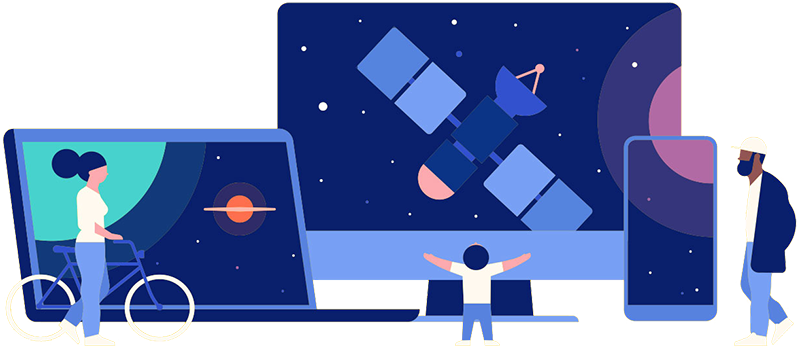
Online Access | Platform & Device Access | Cable or Satellite Access | Over-The-Air Access
Visit Access Guide
Need help accessing PBS Wisconsin anywhere?

Visit Our
Live TV Access Guide
Online AccessPlatform & Device Access
Cable or Satellite Access
Over-The-Air Access
Visit Access Guide
 Passport
Passport
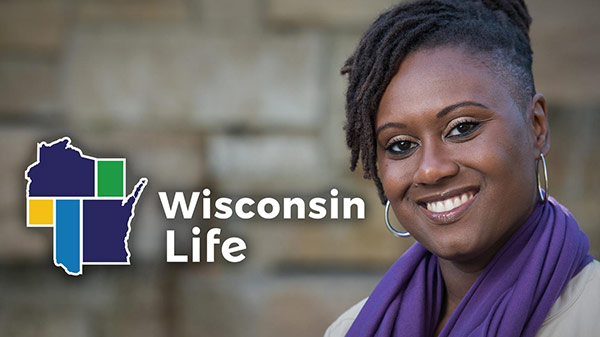
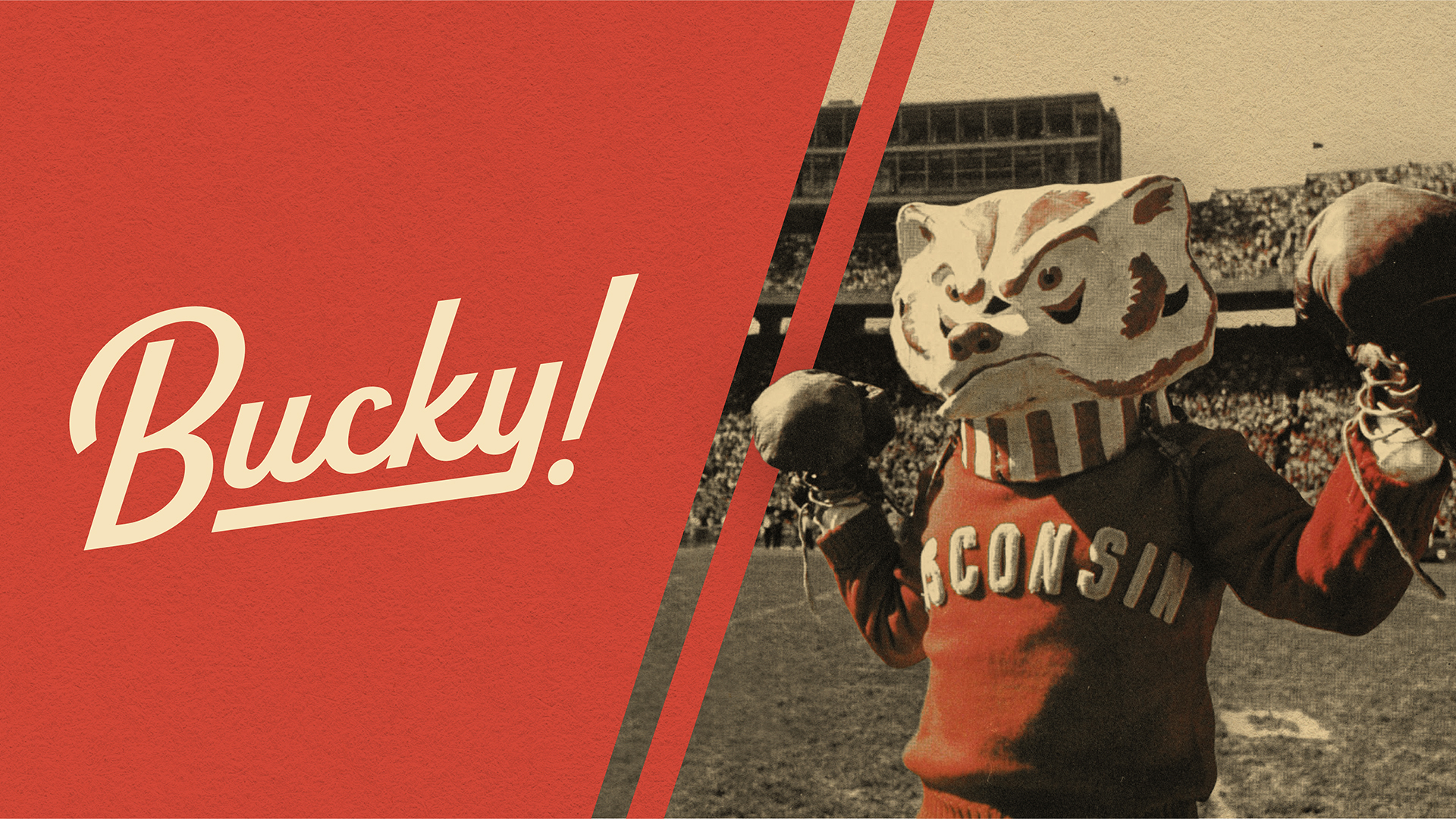
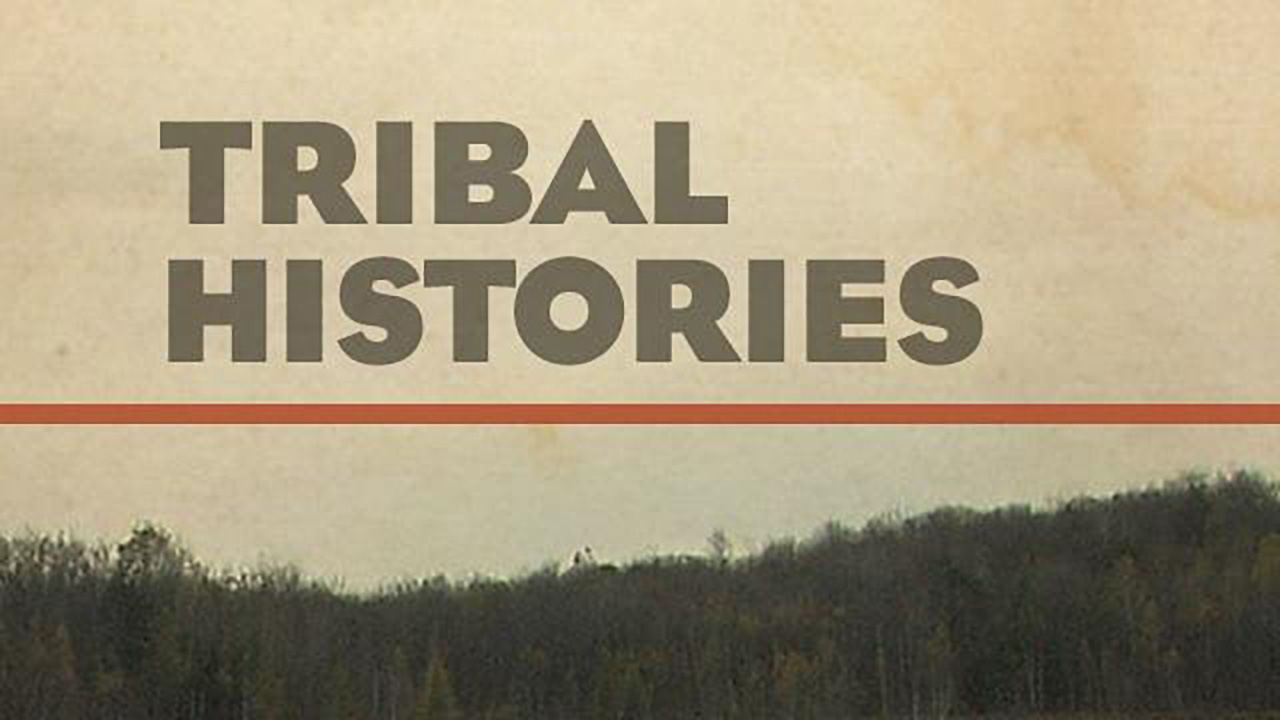
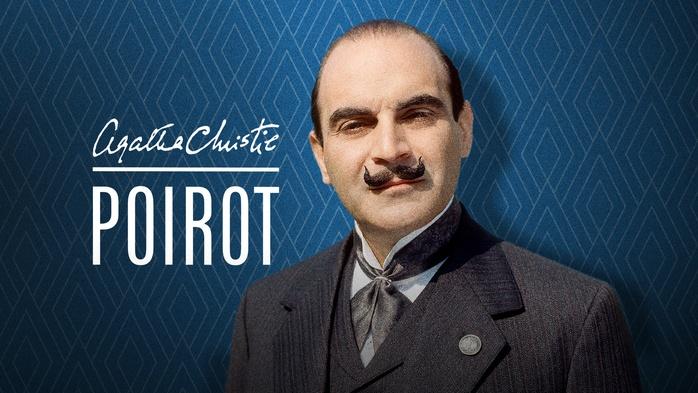

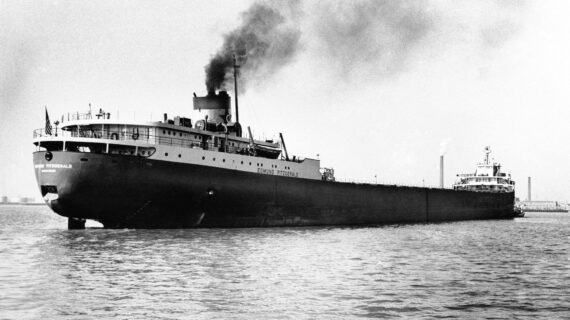

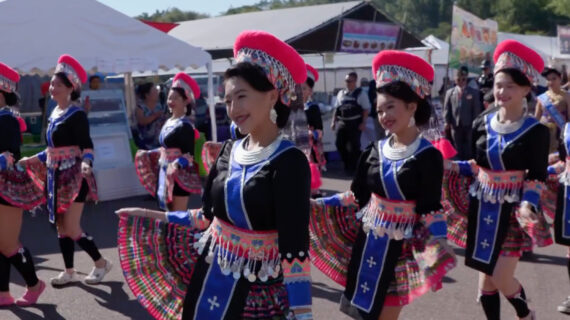
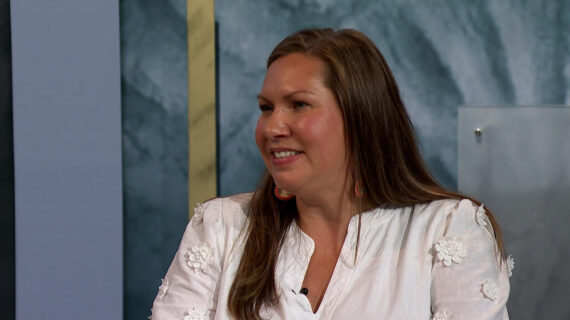
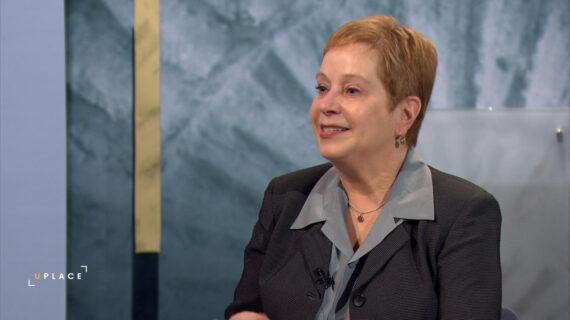

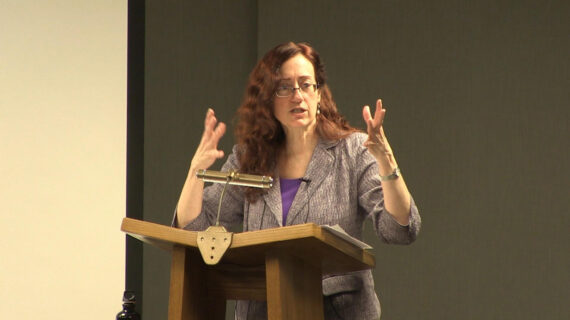
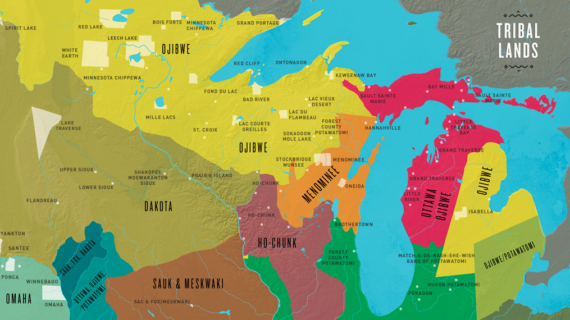
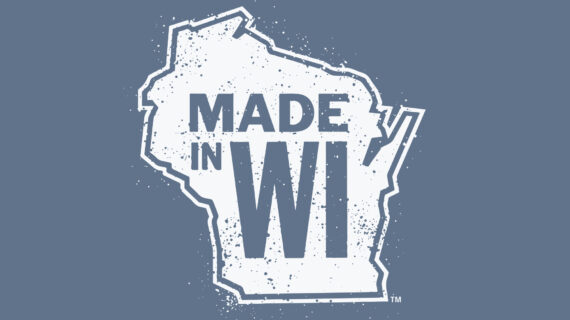
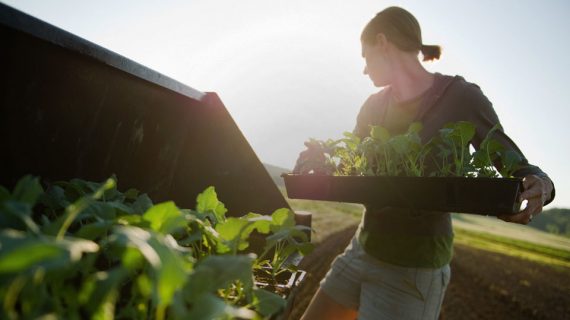
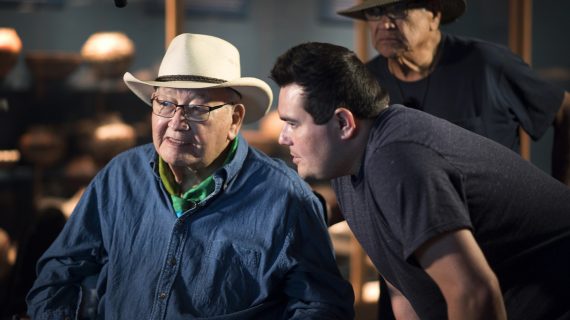


Follow Us